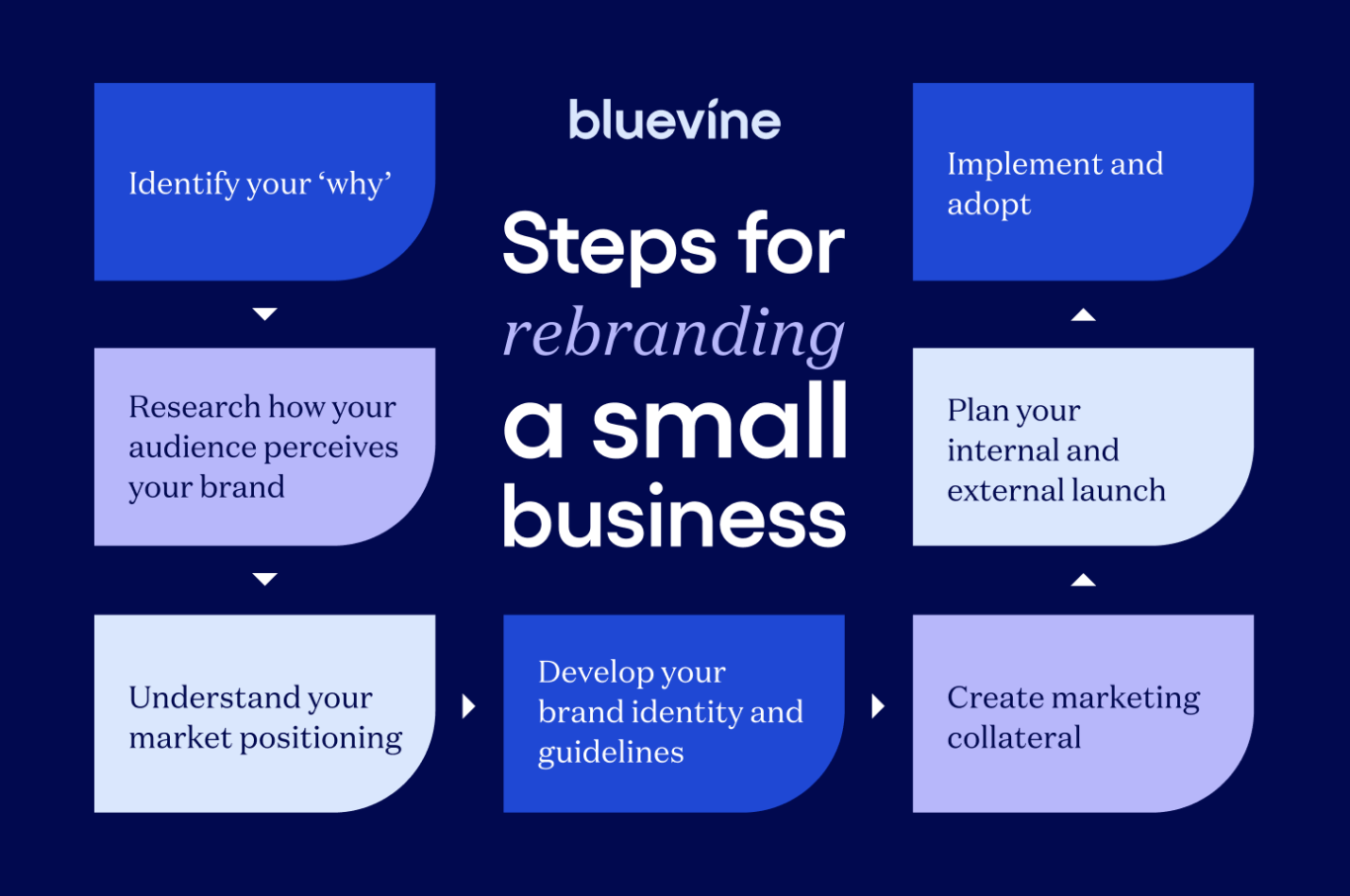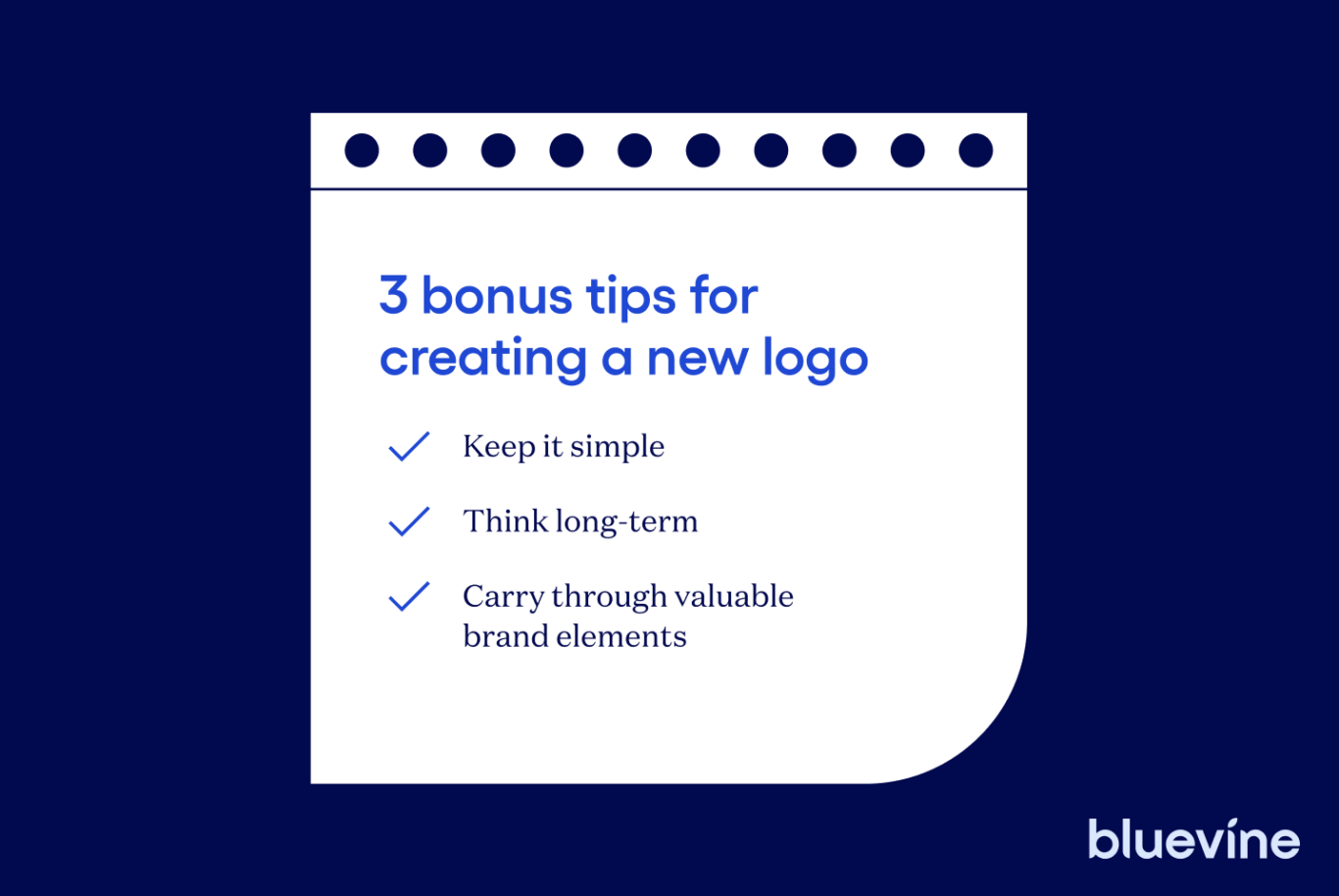In the early days of your business, you may not be focused on your brand––a company name, basic logo, and good product or service may be enough to start generating cash flow. However, once you’ve comfortably set up your operations, established a customer base, and considered where you want your company to go, it may be time to re-evaluate how you’re perceived in the marketplace and build a strong identity to support your growth goals.
What a rebrand is (and what it isn’t)
Your brand is so much more than your logo and color palette. It’s the space you hold in the hearts and minds of your customers. A rebrand typically stems from the need to create a stronger connection between your brand and product with your customers.
A rebrand can be defined when a company refreshes its look and feel––like your logo, color palette, brand voice, etc.––with the intention of shifting that perception and building a deeper connection.
A rebrand can also be a shift in positioning and messaging to evolve with the products you sell, the markets you operate in, and ultimately the audiences you’ll appeal to. Say you have a strong visual identity––your name and logo have equity with your customer base––but your product pipeline is evolving. Revisiting your tagline, messaging, and how you’re positioned in the marketplace could also be considered a rebrand.

Should I rebrand my business?
A rebrand might be right for your business if you’re looking to modernize or refresh, help reflect a new trajectory, or expand into new markets. On the flip side, if your company is struggling, rebranding isn’t a cure-all solution. It’s important to understand what your goals are. Then you can determine whether a rebrand can help you get there.
When you should consider rebranding
- Refresh a tired brand: After years in the market, your brand may look or sound dated––modernizing your brand may help you stand out amongst competitors.
- New mission, vision, or repositioning: If you’re looking to reframe how your customers perceive you or shift the ultimate goal of your company, rebranding provides the perfect opportunity.
- Expand your audience: When you’re expanding to new markets, especially internationally, your brand might benefit from a refreshed look and feel.
- Expand your offering: If your brand has been known only for a specific product or service for a long time, it might be tough to make headway on a new offering. But, with a rebrand, you can better position yourself to offer more products or services.
- Address a merger or acquisition: Two companies joining together creates a third entity that may deserve its own brand identity. Mergers and acquisition rebrands can range from a small logo tweak to a complete refresh.
When a rebrand isn’t right for your business
- Low brand awareness: Rebranding won’t increase your company’s brand awareness. That’s a marketing issue that requires a different type of fix.
- Poor sales: No-name products that generate great sales numbers are selling because they’re quality products. If your products aren’t selling, you shouldn’t necessarily blame your branding.
- Bad press: Rebranding because you got some bad press could look like you’re hiding or sweeping something under the rug.
- New leadership: New leadership often wants to make their mark by rebranding in some capacity, but that may not always be the right strategy for your company. It takes time to see what’s working and what isn’t.
How do I rebrand a small business?
You don’t need to be Dunkin’ or LEGO to rebrand effectively. Small businesses do it all the time. The tips below can help you if you’ve reached a stage in your company’s development where rebranding makes sense.
1. Know why you’re rebranding
Any potential rebrand should start with a good understanding of the business reason behind why you may refresh your brand. Do you need to accelerate growth? Connect with new audiences? Or compete with larger or new competitors?
2. Research, research, research
Perform research on your competitive landscape. How can you stand out from competitors in your space? Who is your target market? What is your audience looking for, and how do you fit in? Use surveys, focus groups, and more quantitative and qualitative methods to figure out the right audience, positioning, visual identity, and vision for your business.
3. Redefine your strategy
When you create your new positioning and messaging, be sure it communicates the future of your business. What do you believe and where are you headed? How will you innovate in terms of your offerings and customer experience? What do you want your brand to represent for your customers and employees?
Your mission statement should explain why your business exists. It’s something that customers, employees, and prospective hires can connect with to make them believe in your company.
Your vision should clearly define what problem your company is trying to solve. How do you create value for your customers? It should give leaders and employees a good idea of where you see your business in the near and distant future.
Your values are what guide your organization and set standards for behavior and decision-making. What kind of culture do you want to create for your team?
4. Build your brand identity
While your mission, vision, and values are mostly for an internal audience, customers often get to know your brand through external-facing elements like your logo, colors, typography, imagery, and voice/tone. They are effectively what brings your brand to life.
When creating your brand’s voice and tone, it’s important to set guidelines that clearly define who you are as a brand, how you talk to your audience, and the dos and don’ts of written and verbal communications. Be specific about:
- How you say hello and goodbye
- When and how you apologize
- How conversational you want to be
- How you refer to your own brand
- Whether you capitalize your product names
- How often you use industry jargon
- How your voice extends to social media channels
Visually, you’ll want to ask yourself questions like:
- What should our logo represent?
- How do we want to use color to create our personality?
- What fonts match our identity best?
- How will we use photography vs. illustrations in our collateral?
- How can our design work with our voice to bring our brand to life?

Learn more about how and why Bluevine rebranded in 2022.
5. Create a launch plan
It’s important to start planning way in advance of your actual rebrand launch. First, identify all the audiences who will need to know about your new branding, both internally and externally. Then you’ll want to determine the precise channels you’ll use to communicate the changes to each audience. The way you tell employees is going to be different from how you unveil your new brand to the general public.
Build out a launch calendar that includes a press release, paid online ads, revamped collateral, and social media. Your strategy could even include a multi-phase approach to increase excitement leading up to the launch. Overall, you’ll want to answer the question: What’s the best way to announce your revamped brand to your audience?
6. Implement your new branding
This is where your team updates all your internal and external communications. Your new branding should come through on all marketing materials, including your website, social media channels, email templates, brochures, fliers, paid advertising, and customer support articles or scripts.
Your launch calendar should account for the time it takes to update these materials, and it’s important to determine whether you’ll complete all the updates before your official rebrand launch, or if you’ll roll them out in a phased approach.
7. Evaluate feedback from start to finish
Use tools to track customer feedback from before your rebrand to after your launch. This should help you get a live read on what’s working and what isn’t. It also gives you the flexibility to strategically pivot or change messaging elements to better fit your audience. The research doesn’t need to stop once you’ve decided on an approach—you can continue those surveys and focus groups throughout the process, especially once you’ve launched your new brand.
If you feel like you’re ready to kick off a rebrand, use our roadmap to help guide the process. Times of change can be scary, but it can also be exciting and rewarding if you approach them with the right mindset and strategy. A rebrand could be one of the most impactful initiatives your business can take.
Revamp your marketing strategy with expert tips from our team.
